
Concept explainers
(a)
To find: the domain and the range of
(a)
Answer to Problem 27RE
The domain of
Explanation of Solution
Given information:
The graph of the function
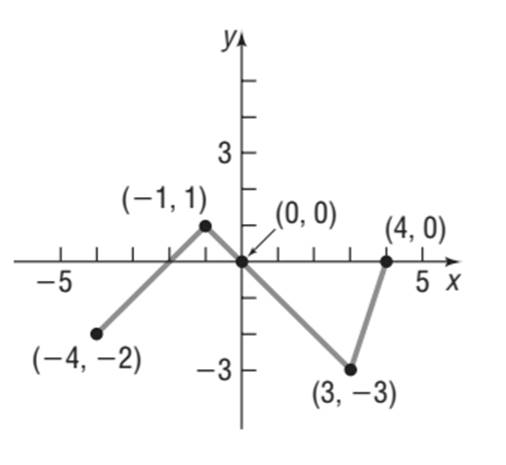
Calculation:
The domain of
(b)
To find: the intervals on which
(b)
Answer to Problem 27RE
The function
Explanation of Solution
Given information:
The graph of the function
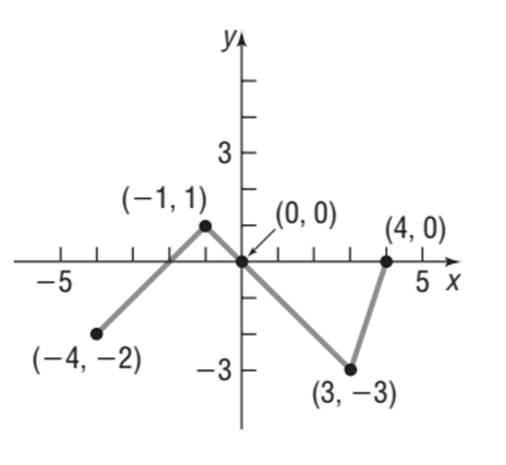
Calculation:
From graph, the function
(c)
To find:
(c)
Answer to Problem 27RE
The local minimum values at
Explanation of Solution
Given information:
The graph of the function
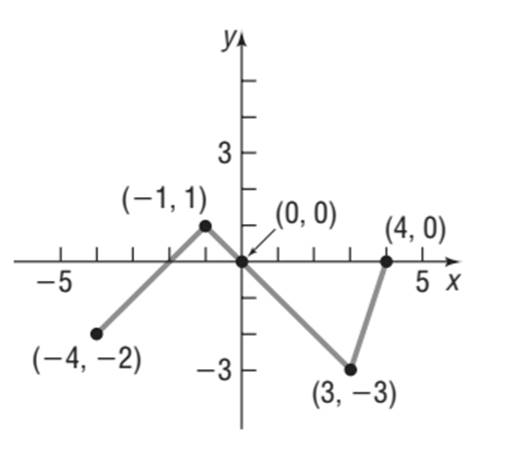
Calculation:
The local minimum values at
(d)
To find: the absolute maximum and absolute minimum value.
(d)
Answer to Problem 27RE
The absolute maximum is
Explanation of Solution
Given information:
The graph of the function
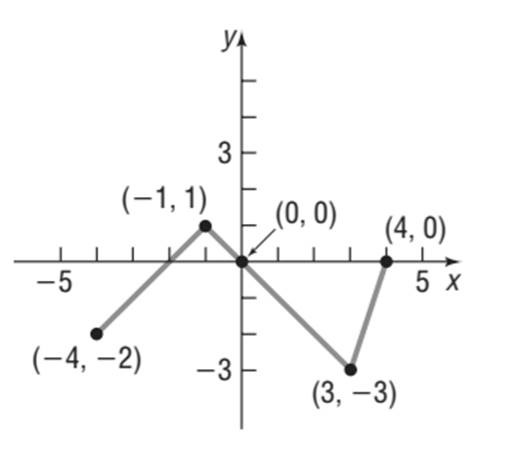
Calculation:
Absolute Maximum occurs at
Absolute Minimum occurs at
The absolute maximum is
(e)
To find: whether the graph is symmetric with respect to the
(e)
Answer to Problem 27RE
There is no symmetry.
Explanation of Solution
Given information:
The graph of the function
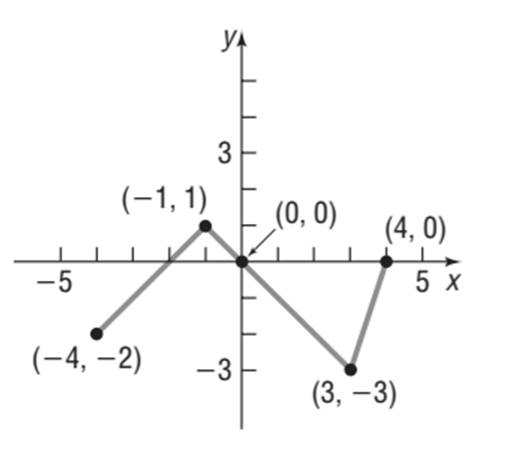
Calculation:
No point on the graph has symmetric coordinate.
From graph, it is clear that there is no symmetry.
(f)
To find: whether the function is even, odd, or neither.
(f)
Answer to Problem 27RE
The function is neither even nor odd.
Explanation of Solution
Given information:
The graph of the function
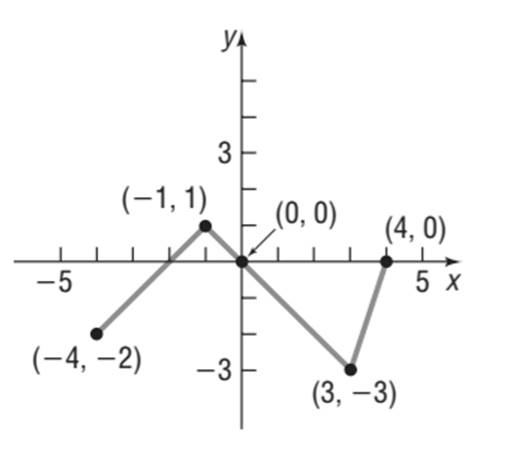
Calculation:
From graph, it is clear that there is no symmetry.
So, the function is neither even nor odd.
(g)
To find: the intercepts.
(g)
Answer to Problem 27RE
Explanation of Solution
Given information:
The graph of the function
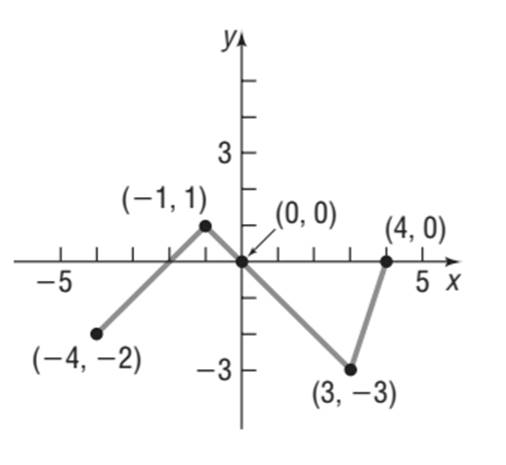
Calculation:
From graph,
Chapter 2 Solutions
Precalculus
Additional Math Textbook Solutions
Introductory Statistics
A Problem Solving Approach To Mathematics For Elementary School Teachers (13th Edition)
Elementary Statistics: Picturing the World (7th Edition)
Calculus: Early Transcendentals (2nd Edition)
Calculus: Early Transcendentals (2nd Edition)
- Pls help ASAParrow_forward9. a) Determie values of a and b so that the function is continuous. ax - 2b f(x) 2 x≤-2 -2x+a, x ≥2 \-ax² - bx + 1, −2 < x < 2) 9b) Consider f(x): = 2x²+x-3 x-b and determine all the values of b such that f(x) does not have a vertical asymptote. Show work.arrow_forwardPls help ASAParrow_forward
- 3. True False. If false create functions that prove it is false. Note: f(x) = g(x). a) If_lim ƒ(x) = ∞ and_lim g(x) = ∞,then_lim [ƒ(x) − g(x)] = 0 x→ 0+ x→0+ x→0+ b) If h(x) and g(x) are continuous at x = c, and if h(c) > 0 and g(c) = 0, then h(x) lim. will = x→c g(x) c) If lim f(x) = 0 and lim g(x) = 0 then lim f(x) does not exist. x-a x-a x→a g(x)arrow_forwardPls help ASAParrow_forward15. a) Consider f(x) = x-1 3x+2 and use the difference quotient to determine the simplified expression in terms of x, for the slope of any tangent to y = f(x). Also, determine the slope at x = 2. 15 b) Determine the equation of the tangent to f(x) at x = 2. Final answer in Standard Form Ax + By + C = 0, A ≥ 0, with no fractions or decimals.arrow_forward
 Calculus: Early TranscendentalsCalculusISBN:9781285741550Author:James StewartPublisher:Cengage Learning
Calculus: Early TranscendentalsCalculusISBN:9781285741550Author:James StewartPublisher:Cengage Learning Thomas' Calculus (14th Edition)CalculusISBN:9780134438986Author:Joel R. Hass, Christopher E. Heil, Maurice D. WeirPublisher:PEARSON
Thomas' Calculus (14th Edition)CalculusISBN:9780134438986Author:Joel R. Hass, Christopher E. Heil, Maurice D. WeirPublisher:PEARSON Calculus: Early Transcendentals (3rd Edition)CalculusISBN:9780134763644Author:William L. Briggs, Lyle Cochran, Bernard Gillett, Eric SchulzPublisher:PEARSON
Calculus: Early Transcendentals (3rd Edition)CalculusISBN:9780134763644Author:William L. Briggs, Lyle Cochran, Bernard Gillett, Eric SchulzPublisher:PEARSON Calculus: Early TranscendentalsCalculusISBN:9781319050740Author:Jon Rogawski, Colin Adams, Robert FranzosaPublisher:W. H. Freeman
Calculus: Early TranscendentalsCalculusISBN:9781319050740Author:Jon Rogawski, Colin Adams, Robert FranzosaPublisher:W. H. Freeman
 Calculus: Early Transcendental FunctionsCalculusISBN:9781337552516Author:Ron Larson, Bruce H. EdwardsPublisher:Cengage Learning
Calculus: Early Transcendental FunctionsCalculusISBN:9781337552516Author:Ron Larson, Bruce H. EdwardsPublisher:Cengage Learning





